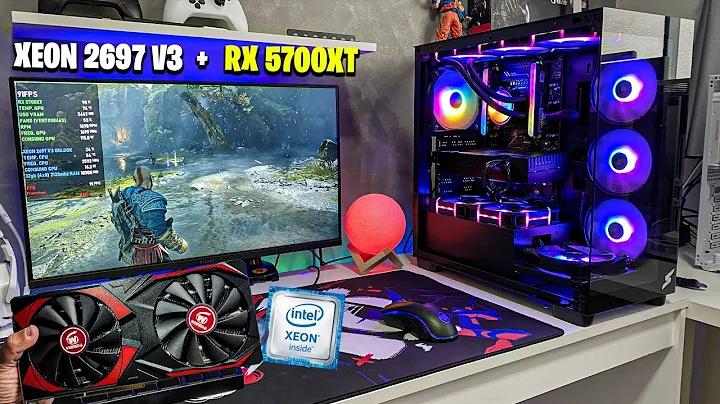Securing Endpoints: Intel & Microsoft Defender
Table of Contents
- Introduction
- The Rise of Cryptojacking
- What is Cryptojacking?
- Increasing Threats and Attacks
- Evolution of Malware Tactics
- Camouflage Techniques
- Deployment in Virtual Machines
- Intel's Role in Threat Detection
- Full Stack Visibility with Intel CPU
- Machine Learning Application
- Integration with Microsoft Defender
- Demonstration of Security Measures
- Scenario One: User Interaction with Malicious Software
- Scenario Two: Advanced Attacks in Virtual Environments
- Functionality of Microsoft Defender
- Real-Time Threat Detection
- Immediate Response Mechanisms
- Conclusion
- Learn More about CPU-Based Threat Detection Solutions
Introduction
In today's digital landscape, ensuring the security of our devices against evolving threats is paramount. One such threat that has gained prominence in recent years is cryptojacking.
The Rise of Cryptojacking
What is Cryptojacking?
Cryptojacking involves the unauthorized use of a computer's resources to mine cryptocurrencies, such as Monero, without the user's consent or knowledge.
Increasing Threats and Attacks
With the surge in cryptocurrency values, attackers have shifted their focus to cryptojacking, resulting in a significant uptick in attacks. These attacks can manifest as performance slowdowns or more malicious payloads, posing a threat to both individual users and organizations.
Evolution of Malware Tactics
Camouflage Techniques
Attackers have developed sophisticated techniques to evade traditional anti-malware defenses, including camouflage and deployment in virtual environments.
Deployment in Virtual Machines
By operating within virtual machines, malware can evade detection from typical anti-malware defenses, leveraging the reduced visibility outside the virtual environment.
Intel's Role in Threat Detection
Full Stack Visibility with Intel CPU
Intel's CPU provides comprehensive visibility into the execution stack, allowing for real-time monitoring of telemetry data from applications and virtual machines.
Machine Learning Application
Through the application of machine learning algorithms, Intel's threat detection technology can identify malware fingerprints and execute code, irrespective of obfuscation techniques employed by attackers.
Integration with Microsoft Defender
Intel's threat detection capabilities seamlessly integrate with Microsoft Defender, enabling swift identification and remediation of attacks to preserve user experience.
Demonstration of Security Measures
Scenario One: User Interaction with Malicious Software
In this scenario, we illustrate how unsuspecting users may inadvertently download and execute crypto-mining malware disguised as system utility tools.
Scenario Two: Advanced Attacks in Virtual Environments
Demonstrating an advanced attack scenario within virtual environments highlights the challenges posed by malware operating outside traditional host environments.
Functionality of Microsoft Defender
Real-Time Threat Detection
Microsoft Defender's real-time threat detection capabilities, combined with Intel's telemetry data, ensure Prompt identification and mitigation of potential threats.
Immediate Response Mechanisms
Upon detection of an attack, Microsoft Defender swiftly responds by eliminating the malicious process, preventing further spread within the network or system infrastructure.
Conclusion
In the ever-evolving landscape of cybersecurity threats, collaboration between hardware and software solutions is crucial in mitigating risks and safeguarding user assets against emerging threats like cryptojacking.
Learn More about CPU-Based Threat Detection Solutions
Explore further insights into CPU-based threat detection solutions by Intel and Microsoft for comprehensive cybersecurity protection.
Highlights
- Cryptojacking: The clandestine hijacking of computing resources for cryptocurrency mining poses a significant threat to users and organizations.
- Malware Evolution: Attackers continually evolve their tactics, employing camouflage techniques and exploiting virtual environments to evade detection.
- Intel's Contribution: Intel's CPU-based threat detection provides unparalleled visibility and integrates seamlessly with Microsoft Defender for robust cybersecurity defense.
- Real-Time Protection: Microsoft Defender's real-time threat detection and immediate response mechanisms ensure swift mitigation of attacks, preserving user experience and system integrity.
FAQ
Q: How does cryptojacking impact system performance?
A: Cryptojacking can significantly degrade system performance by monopolizing CPU resources for cryptocurrency mining activities, resulting in sluggishness and reduced responsiveness.
Q: Can traditional anti-malware software effectively combat cryptojacking?
A: Traditional anti-malware solutions may struggle to detect and mitigate cryptojacking attacks, especially with the evolving tactics employed by attackers. Specialized CPU-based threat detection solutions, like those offered by Intel and Microsoft, provide more robust protection.
Q: What steps can users take to protect themselves from cryptojacking?
A: Users can mitigate the risk of cryptojacking by employing reputable antivirus software, keeping their systems and software updated, and being cautious when downloading or executing files from untrusted sources. Additionally, utilizing hardware-based threat detection solutions can offer an added layer of defense against such attacks.
 WHY YOU SHOULD CHOOSE TOOLIFY
WHY YOU SHOULD CHOOSE TOOLIFY

























